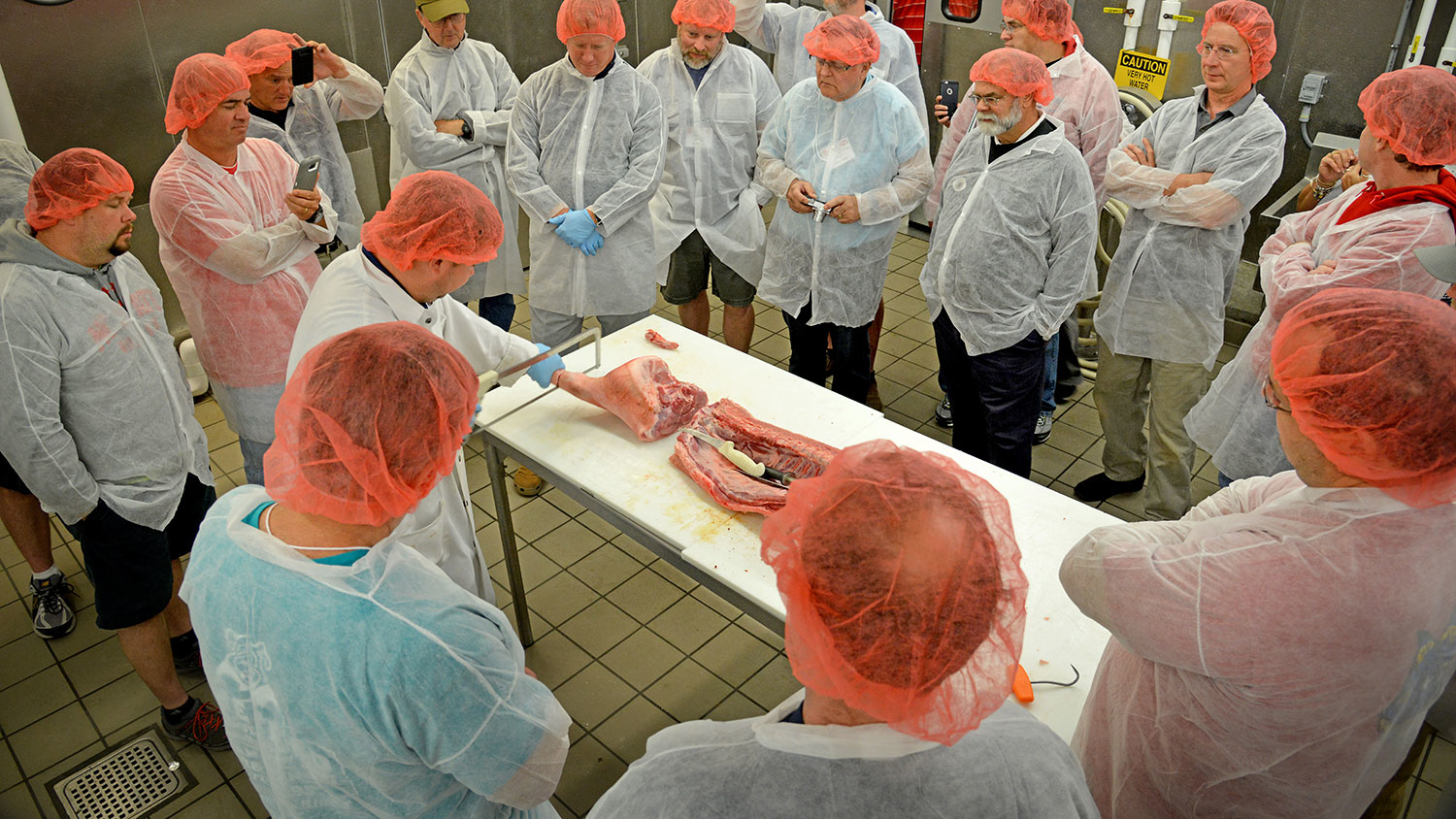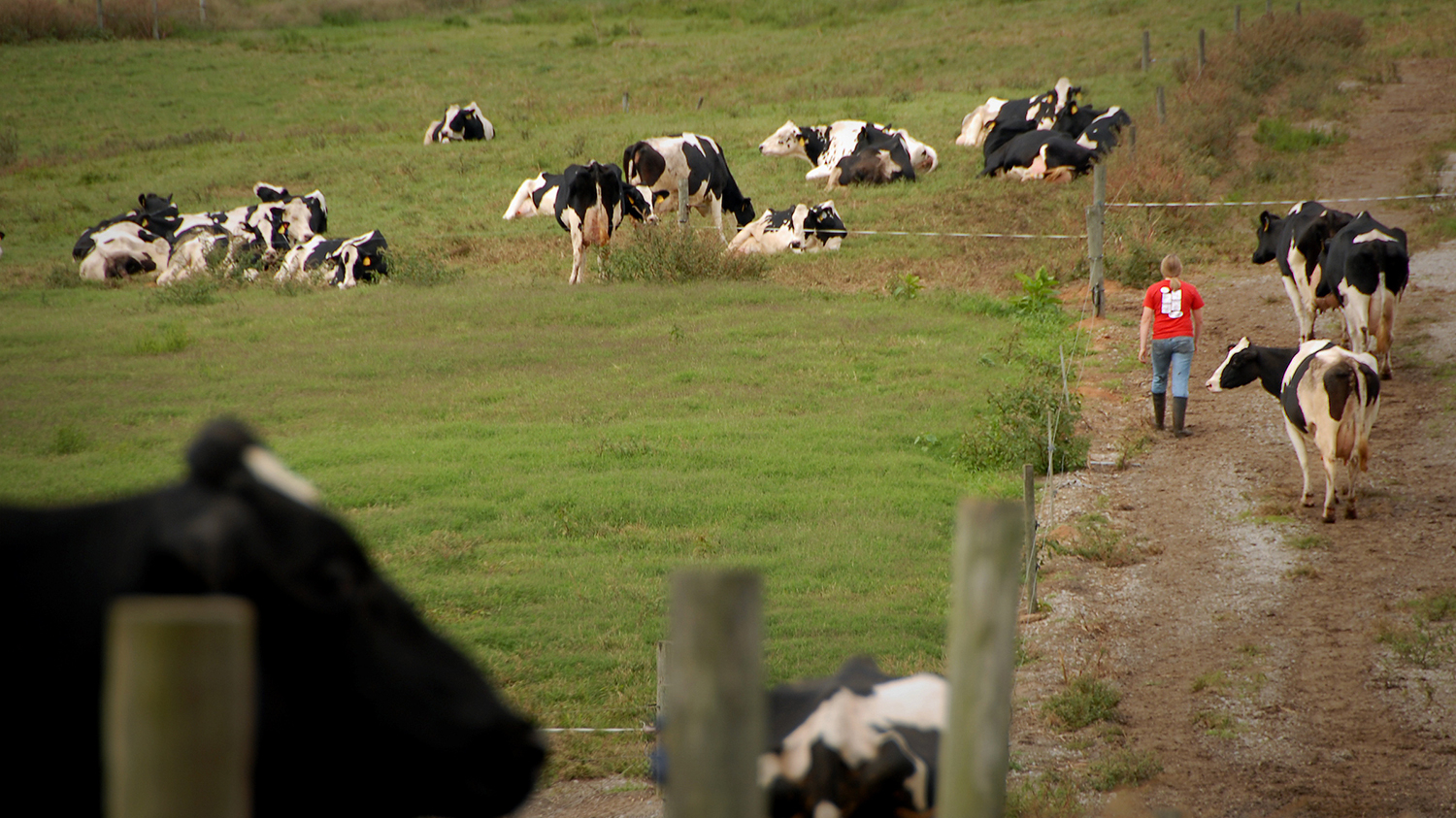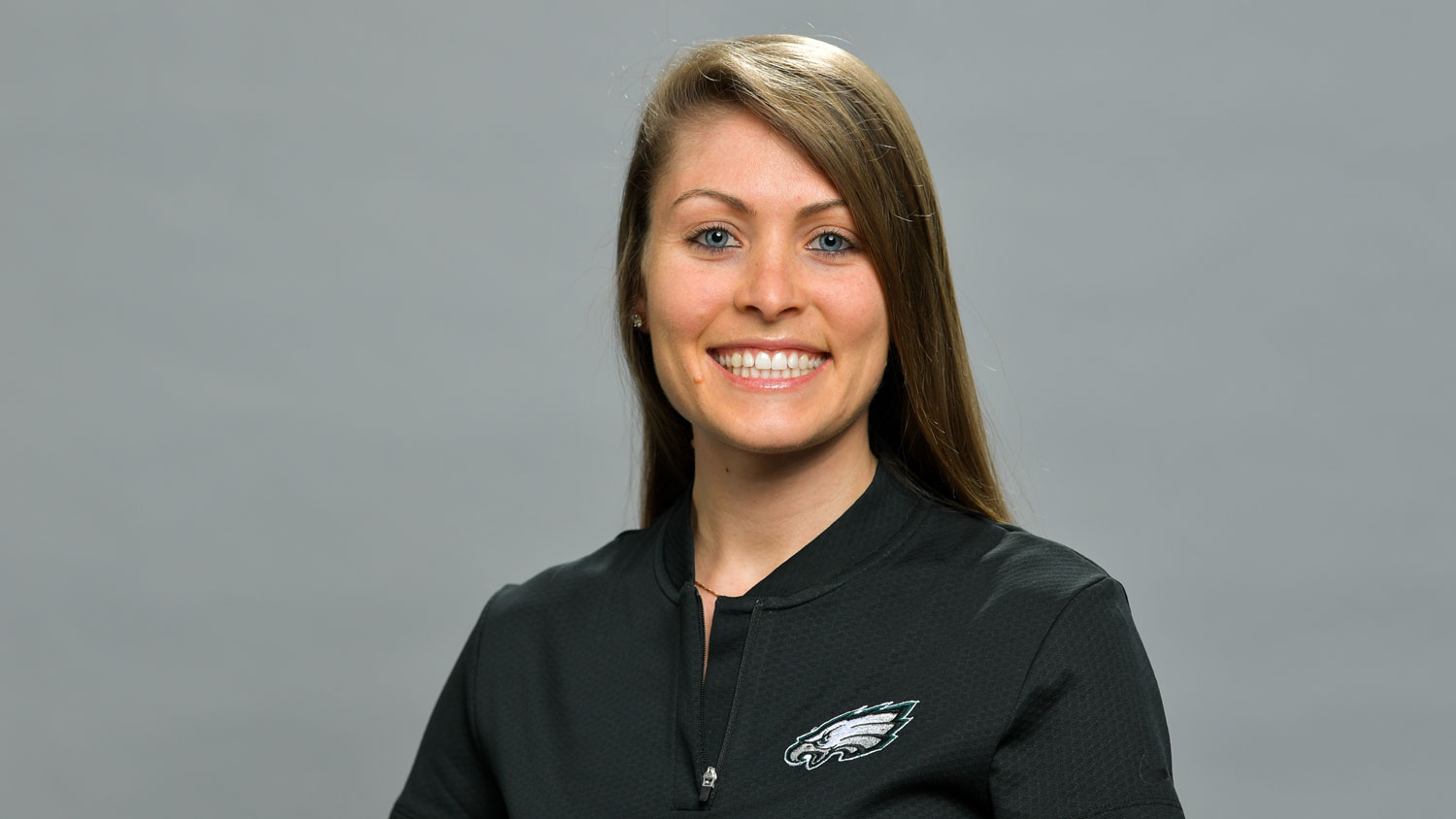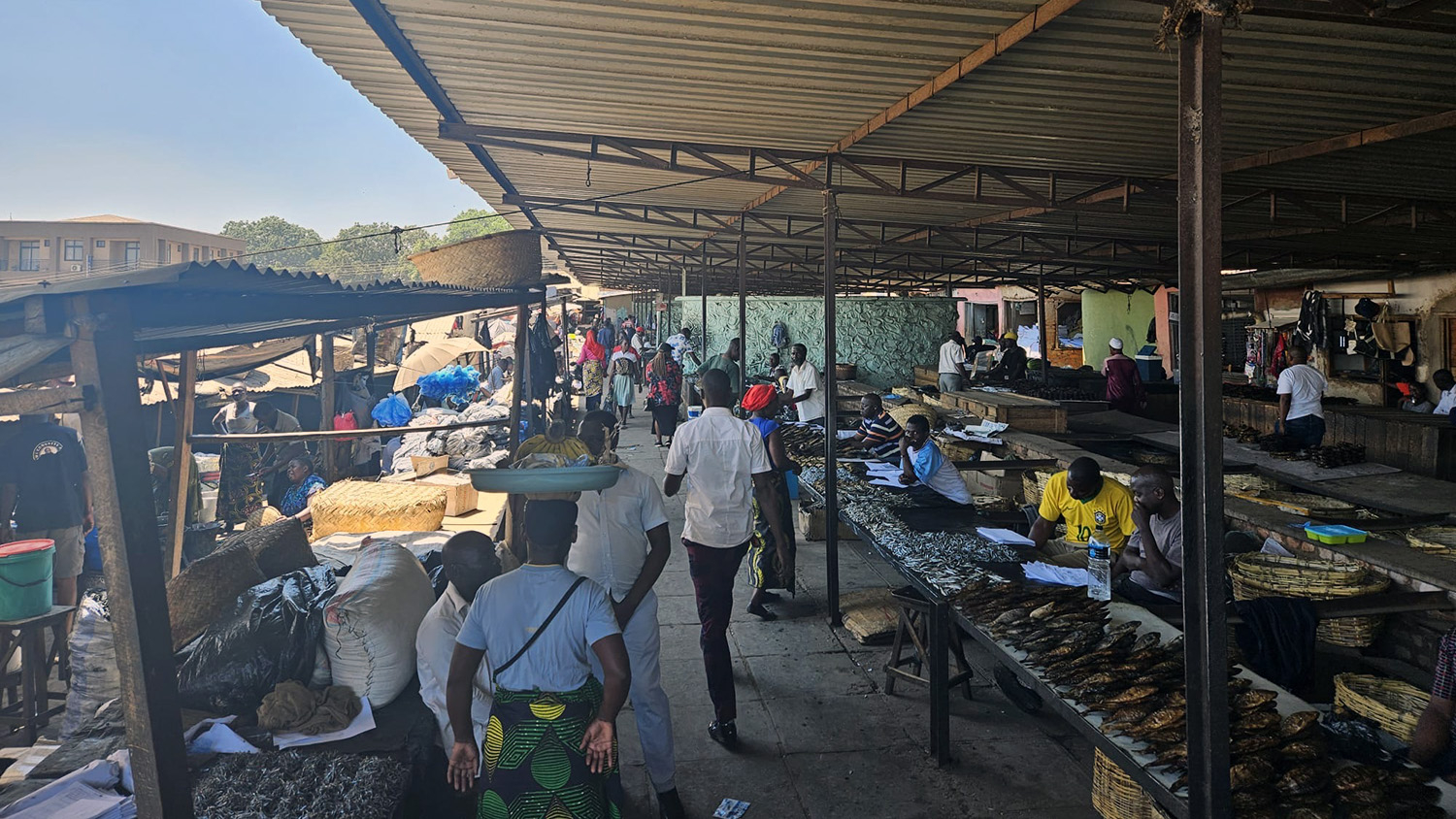NC State BBQ Camp: ‘From Conception to Consumption’

Video by Chris Liotta
Why is barbecue delicious? NC State’s BBQ Camp answers this question and more, giving an education in the science of low ’n’ slow.
Hosted by the Department of Food, Bioprocessing and Nutrition Sciences and the North Carolina Meat Processors Association, the two-day seminar is the only university-level, science-based class of its kind in the Southeast. This year’s BBQ Camp — the second annual — was held June 2-3 in Raleigh.
“This is really like going back to school, not just some cooking class,” explained one participant. Limited to 30 aficionados – and at $450 per person – it may seem an expensive lesson to some. But for the 17 people who missed the cutoff, it was a big disappointment. “We always sell out immediately. But we keep a list of everyone who didn’t get in,” said the NCMPA’s Candace Cansler. “They get ‘first dibs’ on the next one.”
Proving barbecue’s broad appeal, the 2017 class included students from New York, Georgia and South Carolina. Among the more interesting was a lawyer from Sherrills Ford who made his own charcoal as a hobby. Reporters and photographers from local media also observed the events.
In two days, participants turn various raw meats — beef, pork and turkey — into finished products, said camp leader (and NC State associate professor of meat science) Dana Hanson, “So it’s kind of a conception to consumption of barbecue.”
Following introductions, the camp opened Friday with an overview by barbecue historians and authors Bob Garner and John Shelton Reed. Then Hanson quickly got to the, ahem, meat of the matter.
Hanson delved into the intricacies of the muscle versus fat ratios of beef brisket. He went into detail on how the specifics of the various means of raising cattle – and the breeds themselves – influence the final product.
Five briskets ranging from USDA Choice to a Japanese Waygu breed Super Prime were selected for the class’s next session. Hanson provided an overview of how seasonings not only affected taste, but how they would affect the delicate marbling that would render the meat tender enough to fall apart in one’s fingers.
Students then grouped into teams of five and developed dry rub recipes using a wide array of seasonings ranging from simple kosher salt to a concoction called smoked sugar – so concentrated a drop is enough. Their efforts were applied to the briskets and sent to the cooker, to be judged at that night’s dinner.
Trimmings from the briskets were then used to make Texas Hot Link sausages. Students learned correct fat-to-lean proportions, the many different casings used commercially and the flavor profiles different spice combinations would impart on the finished product.
Saturday’s program began as the sun rose by putting a traditional North Carolina whole hog on a cooker for the evening meal. After a smoker-side breakfast of four types of sausages and biscuits, students donned protective coats and hairnets and entered the facility’s meat labs for an in-depth session on converting carcasses to the various cuts used in barbecue.
Led by Hanson’s team, the class cut out ribs, chops and tenderloins, learning how bone, muscle groups and even membranes made the finished meats we are all familiar with. They discovered how liquid solutions improved both flavor and moisture levels. (For the uninitiated, marinating adds flavor, while injections of sodium phosphate enhance moisture.)
They also learned how manufacturers are actively experimenting on alternatives to the seven major allergens, including soy and dairy, used in retail ready-to-use meat products. And that the red color in hamburger packages is not blood but myoglobin – a protein that turns red when exposed to the air.
Moving from the meat labs to the university’s farm, the class learned the variety of techniques available to properly prepare the meat they now understood scientifically. Cooking low and slow can take many paths, from traditional ‘sticks’ of hickory to sophisticated pellets made from a number of woods to impart different flavors. The cookers themselves run as wide a gamut, and half a dozen different types were demonstrated to the group.
They say man cannot live on meat alone. So Chef Eddie Wilson, Golden Corral’s director of culinary innovation, was brought in to give a lesson in campfire cooking. Using wood fires and cast-iron Dutch ovens, including a century-old family heirloom, Wilson built ingredients step-by-step for baked beans, fire-roasted peppers, potato salad and blueberry cobbler.
For their graduation dinner, the class feasted on their hard-learned efforts, including beef ribs, sausage and pork barbecue, accompanied by the campfire-cooked sides. Each also received a gift package of promotional t-shirts, hats, aprons, barbecue tools, a copy of Meathead — the definitive tome by authors Meathead Goldwyn and Boston University’s Dr. Greg Blonder — and a raffle ticket for a custom-made oil drum smoker.
To view photos, visit go.ncsu.edu/BBQCamp2017 and go.ncsu.edu/BBQCamp2016.
To sign up for future BBQ Camps, please email cals_comm@ncsu.edu.
This post was originally published in College of Agriculture and Life Sciences News.


